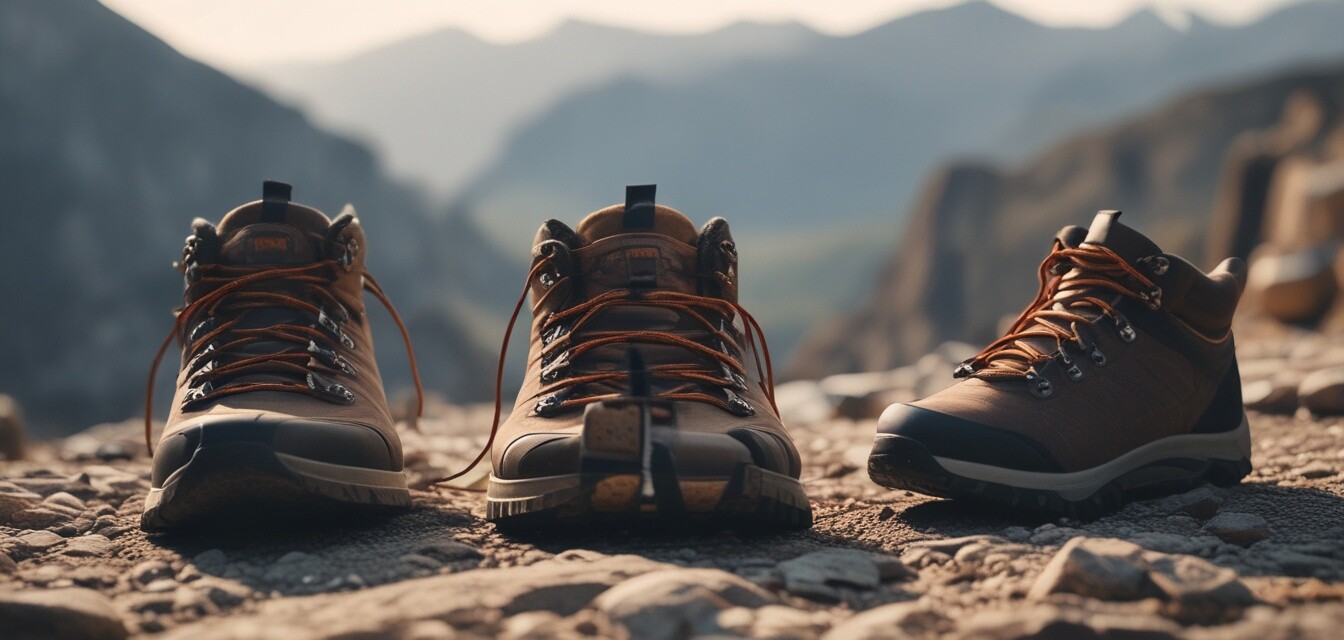
As an Amazon Associate, I earn from any qualifying purchases, at No Extra Cost to You.
Essential Footwear for Different Hiking Conditions
Key Takeaways
- The right footwear is crucial for safety and comfort while hiking.
- Consider terrain, weather, and individual needs to select the appropriate shoes.
- Different types of footwear serve specific purposes: boots, trail runners, and sandals.
- Investing in quality gear can enhance your hiking experience.
When it comes to hiking, the right footwear can make all the difference. Whether you're traversing rocky landscapes, muddy trails, or idyllic forest paths, your choice of footwear should prioritize safety and comfort. In this guide, we'll explore the essential footwear options tailored for varying hiking conditions, ensuring you’re well-equipped for your outdoor adventures.
Understanding Hiking Conditions
Hiking conditions can vary widely, impacting your choice of footwear. Factors such as terrain, weather, and personal comfort play significant roles. Below are common conditions you might encounter:
- Rocky Terrain: Rugged surfaces with loose rocks.
- Muddy Trails: Slippery paths that can be wet and slippery.
- Flat and Well-Maintained Trails: Smooth paths suitable for all levels of hikers.
- Cold and Wet Weather: Conditions requiring waterproof and insulated options.
- Hot Weather: Needs breathable materials to prevent overheating.
Footwear Types for Hiking
Choosing the right type of footwear is essential for maximizing comfort and safety. Here are the most common types:
| Footwear Type | Best For | Pros | Cons |
|---|---|---|---|
| Hiking Boots | Rocky Trails, Steep Terrain | Excellent support and protection | Can be heavy and less breathable |
| Trail Runners | Well-Maintained Trails, Speed Hiking | Lightweight and comfortable | Less durable on rugged paths |
| Sandals | Hot Weather, Casual Trails | Breathable and quick-drying | Minimal support and protection |
| Waterproof Boots | Muddy and Wet Trails | Keep feet dry and warm | Less breathable; can be hot |
1. Hiking Boots
Hiking boots are a favorite among backpackers, offering superior ankle support and durability. They are suited for rocky and uneven terrains, making them a must for challenging hikes. Here are features to look for when choosing hiking boots:
- High ankle support
- Strong traction soles
- Waterproof materials
- Good cushioning for comfort
2. Trail Runners
For those looking for speed and agility on well-maintained trails, trail runners are the perfect option. They offer lighter weight and flexibility, making them ideal for day hikes and quick outings. Key attributes include:
- Lightweight construction
- Breathable mesh uppers
- Traction for varied surfaces
3. Sandals
For summer hikes or water crossings, sandals provide an excellent option for breathability and comfort. However, they should be chosen carefully, especially for varied terrains. Look for:
- Adjustable straps for snug fit
- Strong grip soles
- Quick-drying materials
4. Waterproof Boots
In rainy or snowy conditions, waterproof boots are essential. They keep your feet dry while providing the necessary warmth for colder hikes. Features to prioritize include:
- Insulation for warmth
- Sealed seams to prevent leaks
- Heavy-duty traction for slippery surfaces
Choosing the Right Fit
Regardless of the type you choose, proper fit is critical. Here are essential tips to ensure the best fit:
Beginner's Section
- Try on shoes at the end of the day when your feet are swollen for a better fit.
- Wear the socks you plan to hike in when trying on shoes.
- Ensure there’s enough room at the toe box; your toes should not touch the front of the shoe.
- Walk around to ensure no pinching or painful areas.
Maintenance Tips for Hiking Footwear
To extend the life of your hiking footwear, regular maintenance is key. Here are some maintenance tips:
- Clean your shoes regularly to remove dirt and mud.
- Dry them properly after each hike to prevent mold.
- Apply waterproofing treatments as needed.
- Inspect for wear and tear, and replace laces if necessary.
Conclusion
Your choice of footwear can significantly impact your hiking experience, ensuring safety, comfort, and performance on the trails. By understanding the various hiking conditions and selecting the right footwear tailored to those scenarios, you'll be well-prepared for your outdoor adventures. For more related gear guides, visit our Buying Guides section.